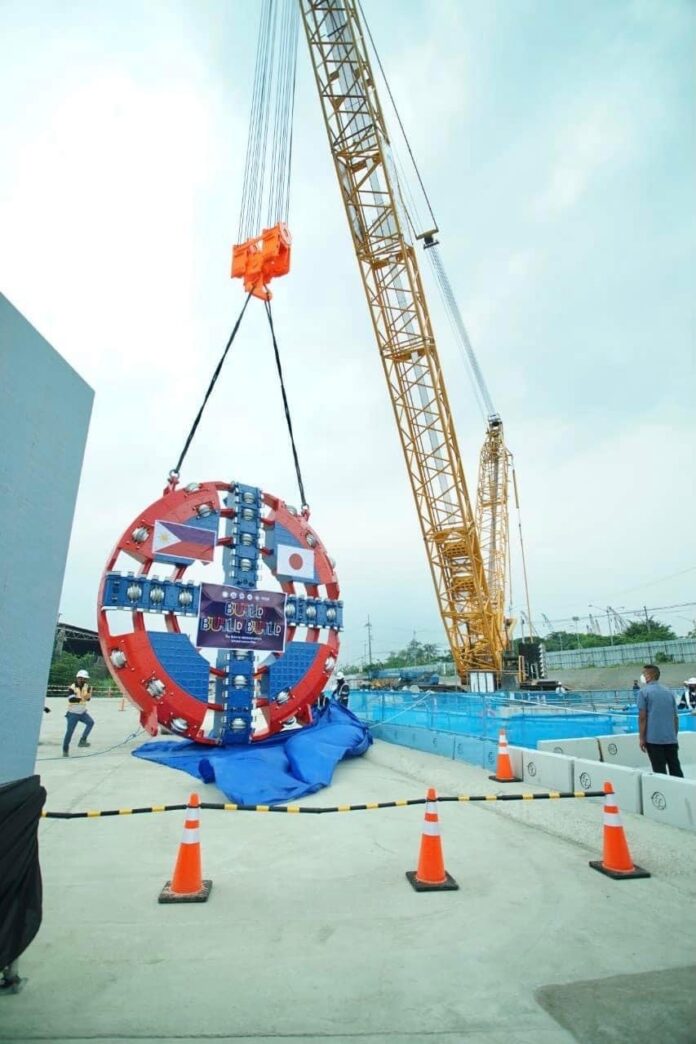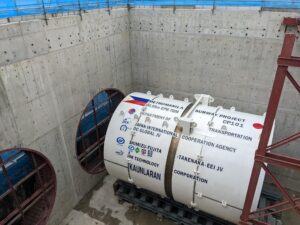
-
Tunneling works for the Philippines’ first ever-underground railway system set after lowering of the first of 25 tunnel boring machine (TBM)
-
The Metro Manila Subway project will dig underground tunnels connecting the subway’s 17 stations from Valenzuela City to Ninoy Aquino International Airport Terminal 3 in Pasay City
-
The subway will have a 33km underground rail line, designed to reduce travel time between Quezon City and NAIA from the present one hour and 10 minutes to just 35 minutes
-
Partial operability of the country’s first-ever subway is expected in 2025, with full operation slated in 2027
-
In its first year of full operations, the underground railway system is expected to accommodate up to 370,000 passengers per day, with a capacity of up to 1 million passengers per day over the next decade
Tunnel boring works for the Metro Manila Subway are set to begin after President Rodrigo R. Duterte and Transportation Secretary Arthur Tugade on June 12 led the lowering and positioning of the first tunnel boring machine (TBM) at the subway’s depot in Valenzuela City for the country’s first-ever underground railway system.
Financed by the Japan International Cooperation Agency (JICA), the Metro Manila Subway project will have a total of 25 TBMs, which will dig underground tunnels that will connect the subway’s 17 stations from Valenzuela City to the Ninoy Aquino International Airport (NAIA) Terminal 3 in Pasay City.
Duterte said the lowering and positioning of the TBM is another milestone under the “Build, Build, Build” program. He and Tugade also led the unveiling of a dynamic full size train simulator for the Philippine Railways Institute, which is likewise being constructed in Valenzuela.
 Each TBM can excavate up to 600 cubic meters of soil and create up to 12 meters of tunnels per day using its massive rotating cutting wheels that can easily break up hard soil and rocks.
Each TBM can excavate up to 600 cubic meters of soil and create up to 12 meters of tunnels per day using its massive rotating cutting wheels that can easily break up hard soil and rocks.
With its sheer size and power, the Metro Manila Subway TBMs are designed to make the process of tunneling faster, while significantly reducing above ground disruption during construction.
In a statement, Tugade cited the project’s financing from the Government of Japan through the Japan International Cooperation Agency (JICA), the contracts awarded, and the resolution of the project’s right-of-way (ROW) issues as crucial reasons why the subway project will continue beyond the Duterte administration.
One of the largest infrastructure flagship projects under the Duterte administration’s “Build, Build, Build” infrastructure program, the Metro Manila Subway is a 33-kilometer underground rail line designed to reduce travel time between Quezon City and NAIA from the present one hour and 10 minutes to just 35 minutes.
In its first year of full operations, the underground railway system is expected to accommodate up to 370,000 passengers per day, with a capacity of up to 1 million passengers per day over the next decades.
If the schedule set for construction is strictly followed, partial operability of the country’s first-ever subway is expected to start in 2025, with full operation slated in 2027, Tugade said.




